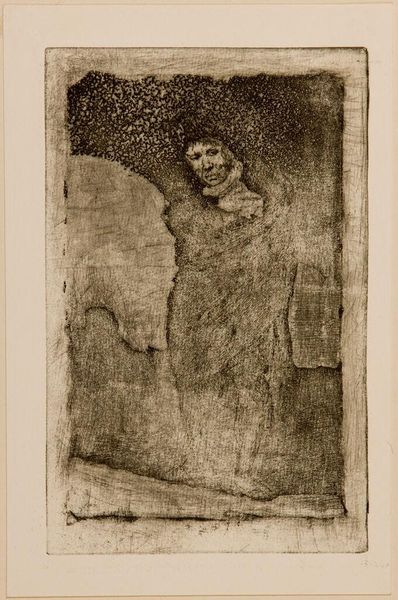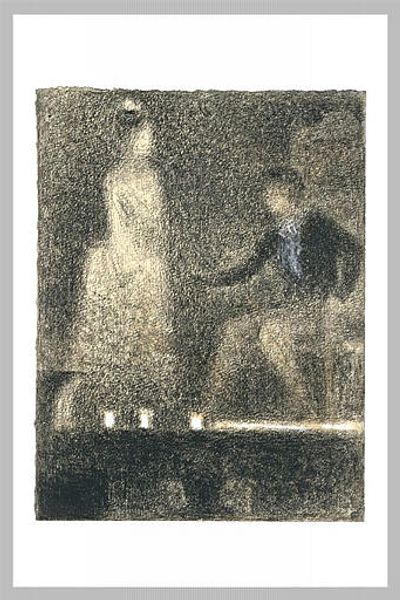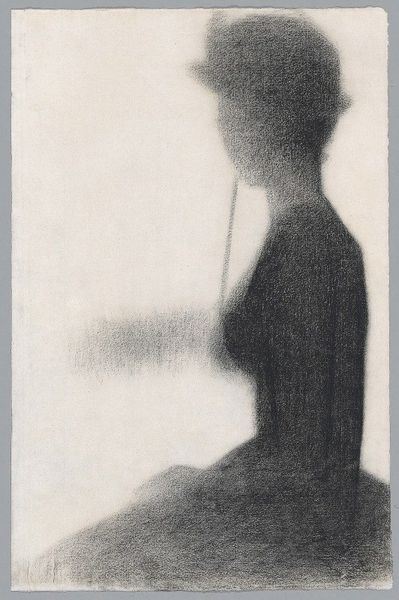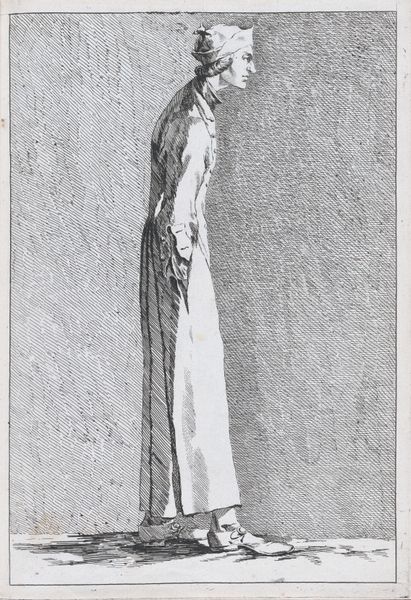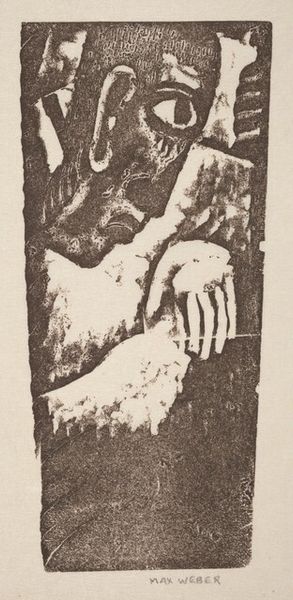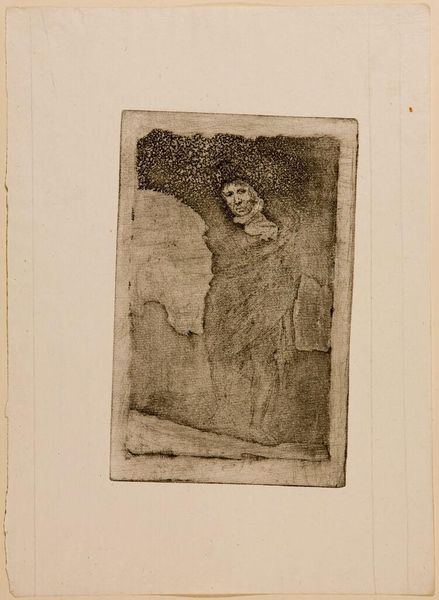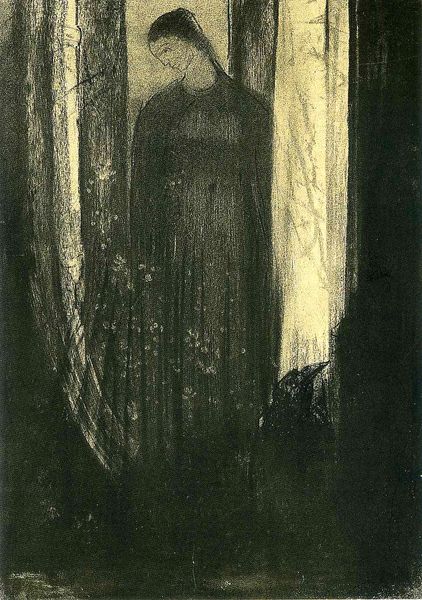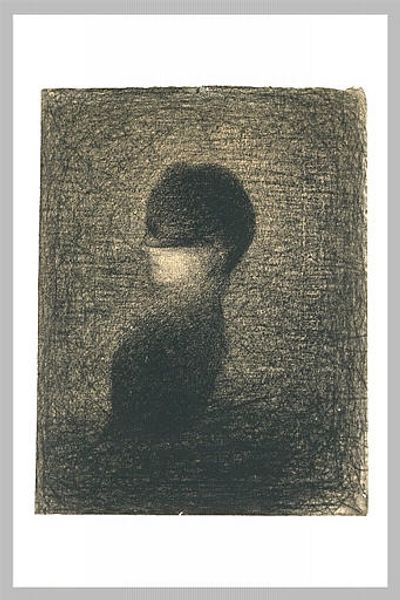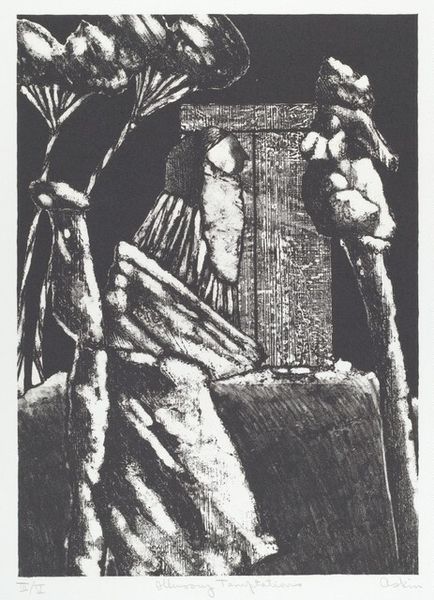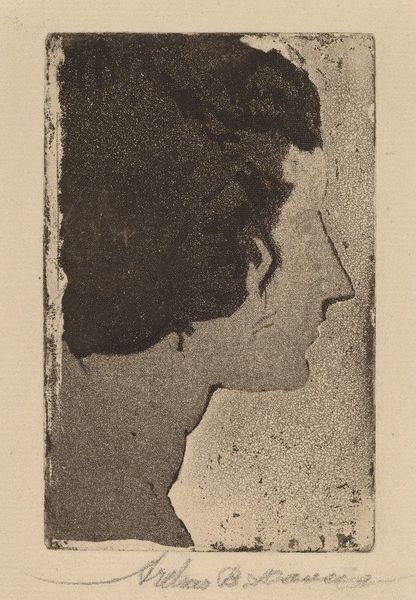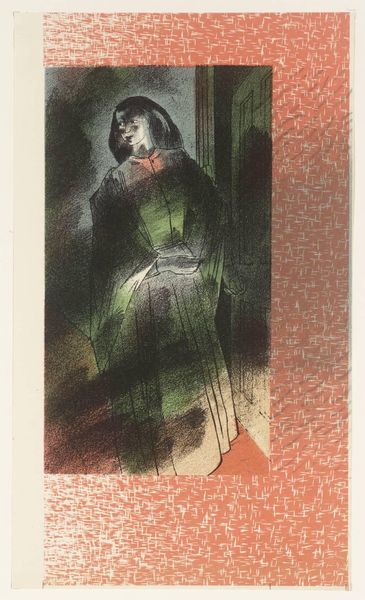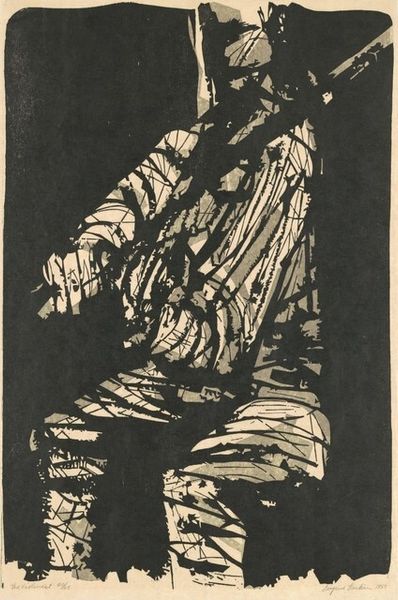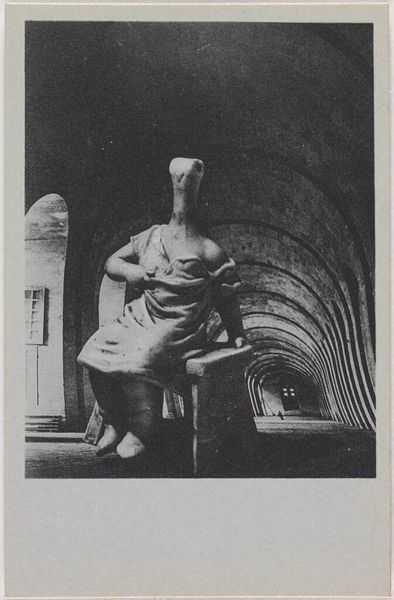
drawing, paper, ink
#
portrait
#
drawing
#
impressionism
#
figuration
#
paper
#
ink
#
post-impressionism
Dimensions: 31 x 23 cm
Copyright: Public domain
Curator: What a subtly haunting piece. Seurat's "The Black Bow," executed in ink on paper around 1882, presents such a distinctive profile. Editor: There's a captivating stillness about it, almost mournful. The contrast is incredible – the light and dark working together creates this pensive mood. Is it a portrait of grief? Curator: It's certainly evocative. Looking at its socio-political environment, late 19th century France experienced profound social upheaval and shifts in gender roles. This drawing encapsulates a certain ambiguity; the woman is presented away from the viewer; almost anonymous. Editor: Right, the averted gaze. It resonates with me because of that very withholding. Consider women of the time whose inner lives often went unseen and unheard. There is also a striking textural quality here. Curator: Seurat's command of line and shade gives an almost ethereal form. He was deeply engaged with scientific approaches to artmaking during his time, exploring how light affects perception. What seems free and immediate actually demonstrates rigorous artistic consideration. It anticipates his later pointillist style. Editor: This method accentuates the woman’s silhouette and it does even suggest that something isn’t quite materialized. She might even stand for broader cultural concerns of repressed emotionality that had such grip upon gender roles in Europe. It isn’t simply observation; its charged by anxieties about modernity, isn’t it? Curator: I agree entirely; its formal precision communicates more broadly with the era. This careful articulation of tone and implied shadow invites us to examine what might be concealed within society. Its very execution emphasizes, as much as represents, those constraints. Editor: Looking at "The Black Bow" from an activist’s viewpoint, you cannot not note it doesn’t overtly depict rebellion or resistance, it still holds a space for empathy and questions the imposed social norms and gender constructs that women found themselves caught in at this point in European history. Curator: Absolutely. It acts, in itself, as an inquiry. Considering its presence here in the Musée d'Orsay, amongst other celebrated works, suggests art’s power to subtly echo society's underlying currents. Editor: Indeed. Even through shadows, artworks provide us access. It’s those underlying societal strains that give it ongoing resonance for me. Thank you for the illumination!
Comments
No comments
Be the first to comment and join the conversation on the ultimate creative platform.
